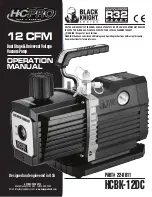
SiUS181305E
Special Control
Function
48
3.3
Defrosting Operation
The defrosting operation is performed to solve frost on the outdoor unit heat exchanger when
heating, in order to recover heating capacity.
<Conditions to start>
The defrosting operation is started referring to the following conditions:
Outdoor heat exchanger heat transfer co-efficiency
Outdoor heat exchanger temperature (Tb)
Timer (2 hours at the minimum)
Outdoor heat-exchange co-efficiency is derived from Tc, Te, and the compressor load.
From the preparation to the defrost operation, and from the defrost operation to the post defrost
operation, the compressor stops for 1 minute to reduce noise on changing of the four-way valve.
3.4
Pump-down Residual Operation
Outline
When activating the compressor, if there is liquid refrigerant remaining in the heat exchanger, the
liquid refrigerant enters into the compressor and dilutes the oil inside resulting in a decrease of
lubricity. Therefore, the pump-down residual operation is performed to collect the refrigerant in the
heat exchanger when the compressor is down.
Outdoor unit actuator
Defrost preparation
operation
Defrost operation
Post defrost operation
Compressor
Upper limit control
140 Hz Full load
36 Hz Unload
+2 steps / 20 sec.
(until Pc - Pe > 0.4 MPa)
(134 ftAq)
Outdoor fan
STEP 8
OFF
STEP 8
Four way valve (Y1S)
ON
OFF
ON
Main electronic expansion valve (Y1E) SH control
480 pulse
55 pulse
Subcooling electronic expansion valve
(Y3E)
0 pulse
0 pulse
0 pulse
Hot gas bypass solenoid valve (Y2S)
OFF
ON
ON
Ending conditions
2 min.
15 min.
Tb > 11°C
(51.8°F)
Ts1 – Te < 5°C
(9°F)
160 sec.
Pc – Pe > 0.4 MPa
(134 ftAq)
or
&
or
Indoor unit actuator
Operation
Indoor fan
Thermostat ON unit
OFF
Stopping unit
OFF
Thermostat OFF unit
OFF
Electronic expansion valve of
BP unit
Thermostat ON unit
SH control
Stopping unit
80 pulse
Thermostat OFF unit
SH control
















































